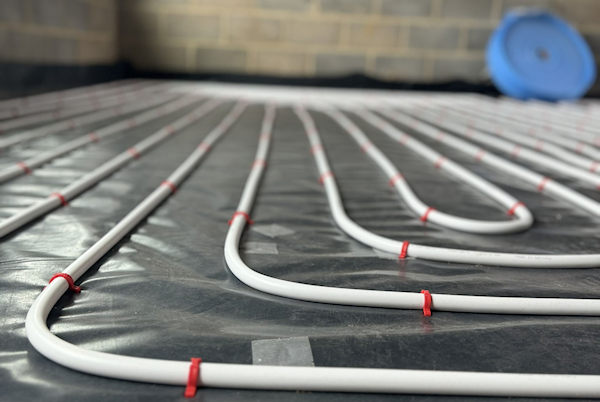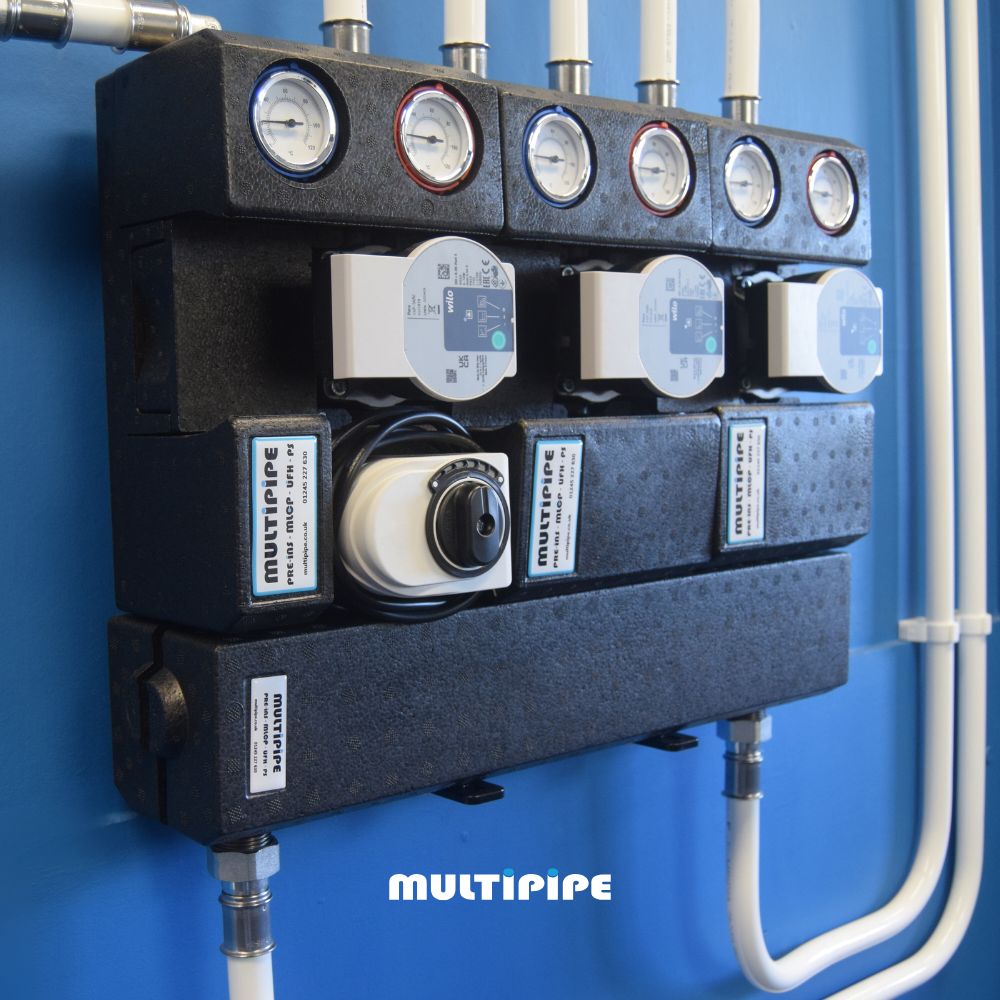
When it comes to UFH on ground floors, this tends to be done by embedding pipe into the screed. And providing it is done right, you have an extremely efficient system. However, more end users want UFH throughout their homes, meaning the incorporation of underfloor heating on (typically) a suspended timber floor.
Many systems can be installed on the first floors, but many increase the height of the floor or are too heavy for the timber structure. A Heat emission plates (HEPs) system allows you to fit UFH without raising your floor.
Follow our tips to help you get the best out of your HEP install.
Things to know when selecting this system.
- Select the thickest plate you can (the thicker the plate, the better the heat transfer). Ask your supplier for the thickness of the plate. You need to be looking at 0.5 mm plates – any thinner & the heat transfer is reduced.
- The centres of the joists are important if selecting HEPs. They need to be uniform. Otherwise, they become hard to install.
- Standard HEPs cannot be installed on engineered-type joists. You must notch the joist at the end, which is a big no on engineered joists. The only option is to fit from below (which we can supply but don’t recommend)
- The plate size needs to match your joist, the most common joist centre is 400mm, and the plates should be slightly shorter than this. This is so the HEPs do not overlap and cause noise.
Install top tips
Ok, so you decide this system fits your client’s installation. Now it comes to the laying. Follow our tip to make laying a little bit easier (and work better)…
- The biggest mistake I see with this system and ultimately giving an inferior performance, is how the plates are laid. I have heard of far too many installs where the plate has sagged into the joist bay. avoid this by building a false floor and overfill it with a loose-fill insulation


Important: Any air gap will lead to a massive reduction in system performance to ensure that the plate sits proud before laying the finished floor.
- We find that MLC is too tricky to lay because of the stiffness, so use a PEX or PE-RT pipe.
- Make sure the plate has a light bulb profile (AKA omega profile)groove and not a simple U profile groove. They might be more costly, but it stops the pipe from coming out of the plate. (all Multipipe HEPs have Omega profiles)
- Ensure you are notching the joist in line with building regs; otherwise, you can weaken the floor.
- Try not to step on the plates; if you do, make sure they are still sitting proud.
- Use a staple gun to tack the plates in place.
- NEVER! overlap plate both on the joist and between allow room for the expansion, otherwise this can lead to noisy systems
- file plate edges, any sharp edges can wear the pipe down.
If you’ve any more questions about installing Heat Emission Plates, our technical team is always here to help you out.
ready for a quote? send your plans in
DON’T FORGET TO FOLLOW US FOR THE LATEST NEWS AND BLOGS!












